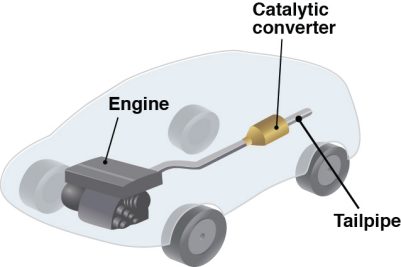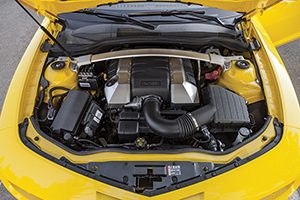Open for Discussion: Can We Make Cars that Are Clean, Fuel-Efficient, and Powerful?
By John Uhlrich February 2017
Who wouldn’t want a car that emits almost no pollution, consumes little gasoline, and is powerful enough to carry you to your destination at high speed? These are the three main features that car manufacturers try to achieve when building any car. However, they are difficult to achieve together, and trade-offs need to be made. The main reason is that achieving advances in one feature often affects the other two.
To look at how car manufacturers work around this issue to improve a car’s performance, let’s look at each of the three features—car emissions, fuel efficiency, and engine power—and how they can be enhanced.
Car emissions
The air pollutants released in a car exhaust are due to undesirable chemical reactions inside the engine. The main pollutants are carbon monoxide (CO), unburned hydrocarbon fuel, and nitrogen oxides, which include gases such as nitric oxide (NO) and nitrogen dioxide (NO2). Nitrogen oxides can lead to acid rain, ozone layer depletion, and respiratory health problems.
To prevent these chemicals from being released into the air, cars are equipped with a catalytic converter that breaks down these pollutants before they reach the tailpipe. As a catalytic converter adds additional resistance to the combustion gases moving through the vehicle, its use reduces the engine power and fuel economy. Car manufacturers have developed specially designed high-flow catalytic converters that provide minimal resistance, ensuring that the engine power and fuel economy are not affected too severely.
Fuel economy
Fuel economy refers to how much gasoline or diesel fuel is consumed for a given distance traveled. A car with high fuel economy can travel a long distance before the tank needs to be filled up again. The fuel economy of a car is affected by many factors, from how you drive—aggressive driving, with quick acceleration, consumes more fuel than cruising at a constant speed—to how well a car is maintained and even the weather.
Since the 1970s, automobile standards have continued to tighten, with a target fuel economy of 54.5 miles per gallon now slated for implementation in the United States by 2025. Car manufacturers have partly responded to this demand by making smaller vehicles, which have lower power. To counteract this effect, car manufacturers have been able to pack more power into ever-smaller engines by using technologies such as fuel injection.
Engine power
A powerful engine allows a car to go up a hill more easily, increase its speed faster, and switch lanes more easily. The engine power can be enhanced by using a supercharger or turbocharger, which uses fans on the air intake and exhaust to squeeze air into the engine at a high pressure. But this technique can lead to higher fuel consumption, because a higher density of air is pushed into the engine cylinders, and the additional air requires more fuel to react with it.
To keep cars from wasting power unnecessarily, car manufacturers have incorporated computers into the engine design, which put the engine into a high-power state only when the driver needs an extra boost. This way, you don't waste significant engine power while cruising at constant speed or idling at a stoplight.
Achieving the right balance
Given the limitations discussed above, which of the three features—car emissions, fuel efficiency, and engine power—do you think will be the easiest to implement in the future? What other innovations—such as hybrid electric technology—will be most important for the car of the future?




